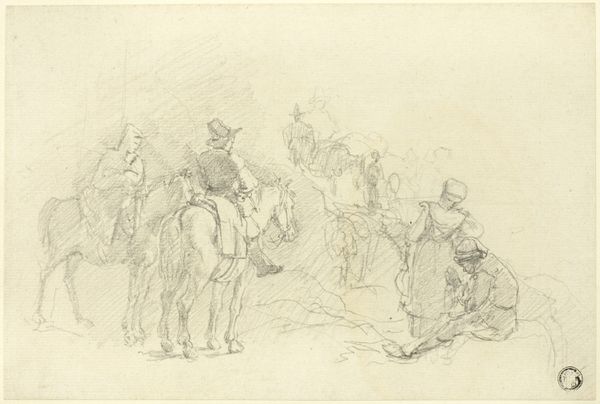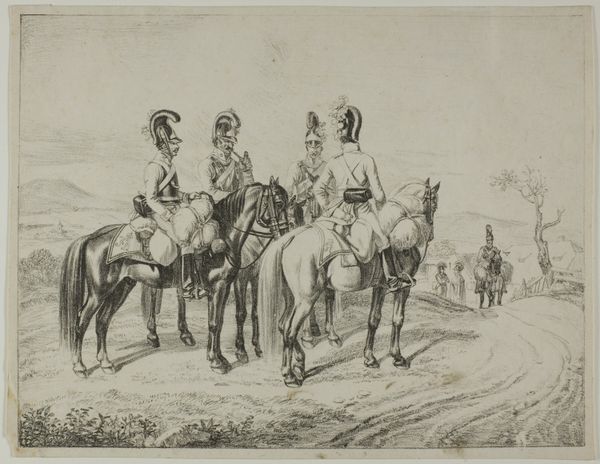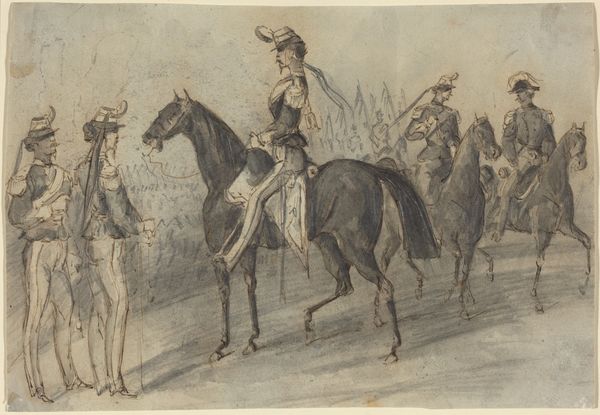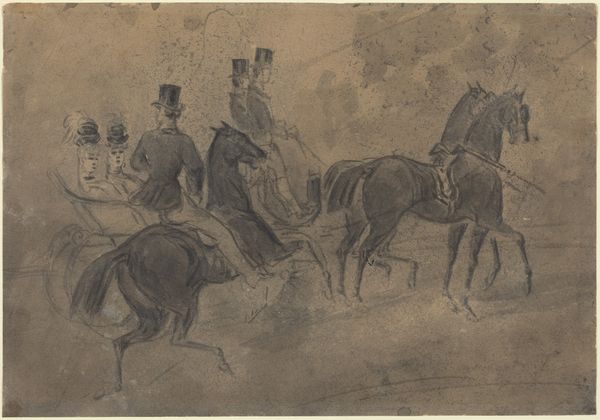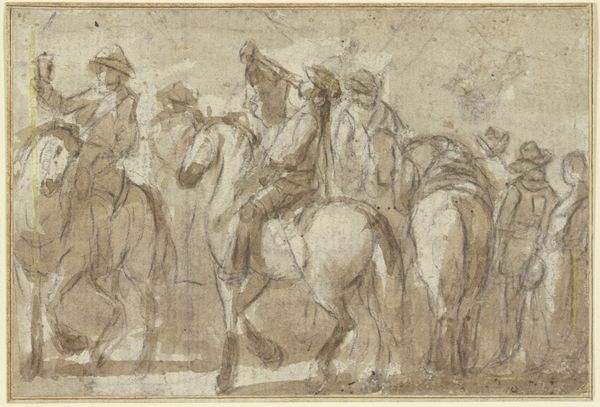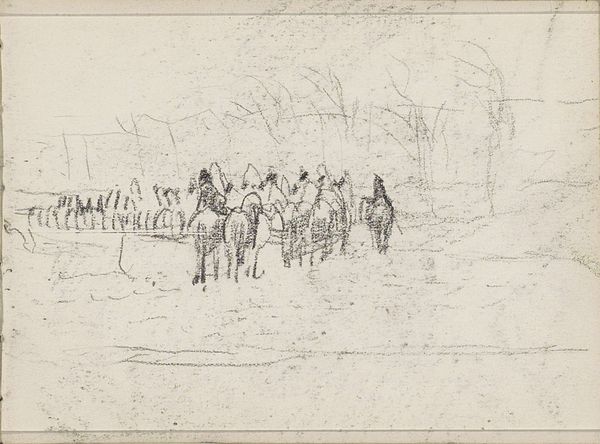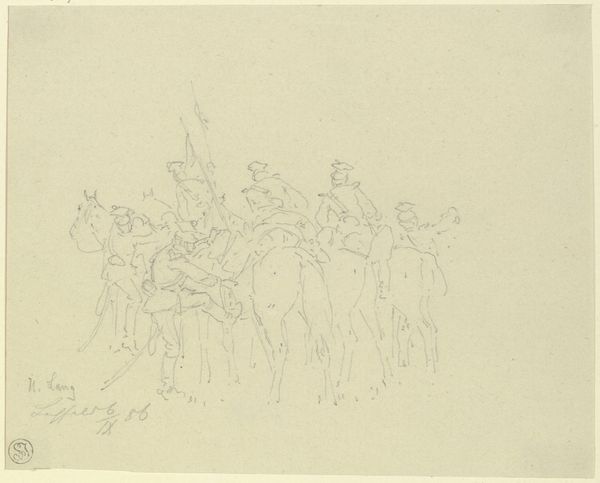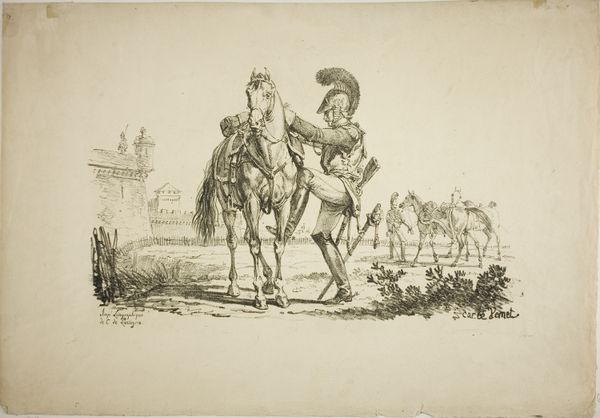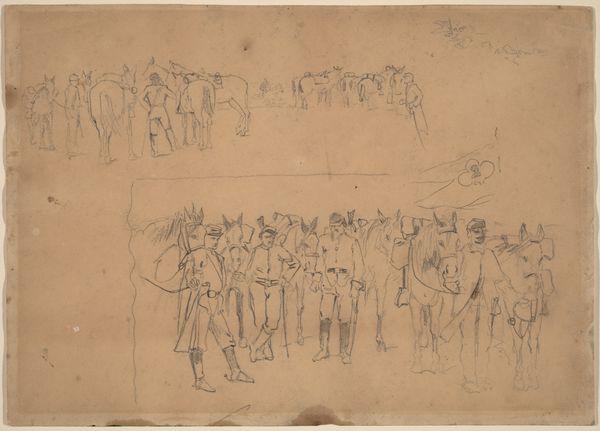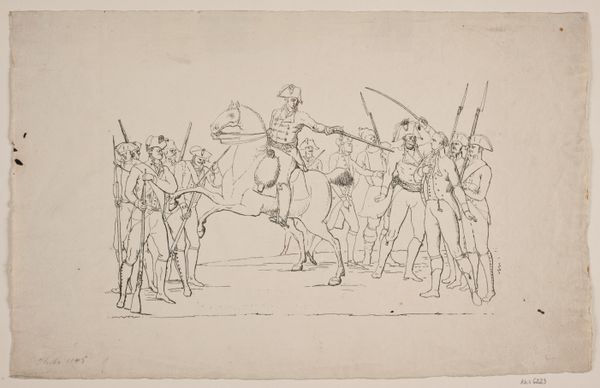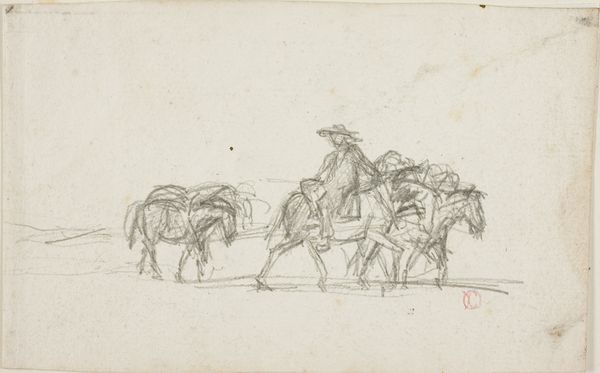
drawing, print, pencil
#
portrait
#
drawing
# print
#
landscape
#
pencil
#
horse
#
men
#
cityscape
#
genre-painting
Dimensions: 7 11/16 x 11 1/8 in. (19.5 x 28.2 cm)
Copyright: Public Domain
Curator: Ah, a brisk promenade in the Bois de Boulogne, it seems! It’s all sweeping lines and implied movement, isn’t it? Editor: It's like a faded dream, all grays and hazy figures. Almost ghostly, yet very active. I can almost hear the clip-clop of the horses’ hooves on cobblestones. Curator: Exactly! This is "Driving in the Bois de Boulogne" by Constantin Guys. Guys was this fascinating chronicler of modern life, flitting through Parisian society, documenting its fleeting moments with his pencil and ink. The date’s a bit broad, 1815-1892. Editor: "Fleeting" is the perfect word. It feels like he captured it in a hurry, which only enhances the scene’s lively quality, don’t you think? So different from those stiff, posed portraits of the time. And look at all those hats! Curator: Absolutely! The immediacy is key. This work really captures that burgeoning sense of modern spectacle, the commodification of leisure. It’s a drawing, primarily in pencil, and what seems to be some light washes to create tonal variation and bring attention to the movement of each figure in space. The Bois de Boulogne itself was transformed during this period from a royal park to a public space, and works like this offer us a window into that social transformation. Editor: It's interesting how he gives as much attention to the fashion as he does the carriages. You get the feeling he's observing people *observing*. The people are putting on a display just as much as the drawing itself. There's even something quite satirical about the faces. Curator: I agree entirely. He wasn’t just documenting what they wore, but their social interactions. You sense the layers of class and aspiration inherent in that public parade. It's not only recording modernity, it’s also participating in shaping opinions about the spectacle of wealth and status. Editor: I was struck initially by the ghostly quality and its grayscale, but knowing that it also comments on social structure makes me appreciate it on a different level. It is more than just an aesthetic piece of art. It is social commentary. Curator: Well, there you have it – from ghostly visions to social critique. Never underestimate the power of a sketch, right? Editor: Indeed, it has given me plenty to think about in terms of how a simple image, created using lines and grays, manages to represent complex aspects of Parisian society in the 1800s. It really invites us to interpret the piece, rather than merely observe it!
Comments
No comments
Be the first to comment and join the conversation on the ultimate creative platform.
